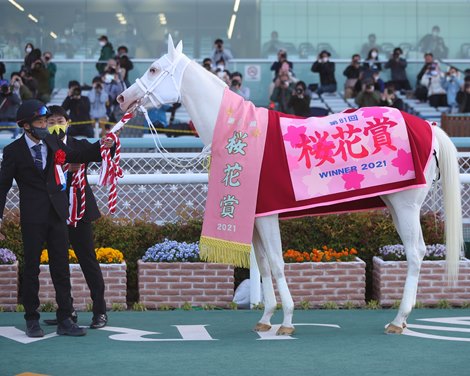From the Morgans of Color website:
There are a few documented cases in other breeds of KIT mutations resulting in what are known as “de novo”—or spontaneously occurring—true roans. These horses do not have a roan parent; their coloring is due to a random mutation in KIT. The New Zealand bred bay Thoroughbred stallion, Catch A Bird, is the most well-known example of this phenomena. Catch A Bird had what looked like white brindling over his body, which is not a typical roan phenotype. Roan is not known to exist in Thoroughbreds, but four of Catch A Bird’s foals had the classic look of a dark headed roan. Would it be possible that the same thing could happen in Morgans, potentially bringing roan back to our breed? For many years that has been the hope for fans of the colorful Morgan. Last year, at Caroline Tarr’s Belvue Stud in South Australia, it actually happened. Watching Moonshadows (Mt Tawonga King (black) x Mt Tawonga Sophia (bay)) appears to be a true dark headed roan, and it is hoped that she will pass on her roan when she is eventually bred, returning this beautiful color to the breed.
This was not ‘last year’ … the filly is coming 3 now…and just stunning. She is out of a bay and by a black. No roan in either line.
Previous to her, the breed had one other ‘better-known’ gelding state-side in the late 80s into the 90s. A Blue Roan who showed in dressage. His Roan line seems to have ended with him. The roan came from his dam, but it was just her and her dam and while both had roan offspring, in my prelim research, the offspring didn’t produce anything. This was also in the time where the Morgan registry was very anti-color. It is not surprising that the color was shut down really quick.

I have guarded hopes for Moonshadow though! Can’t wait to see if they breed her.







 Last I remember I think there were over 50 Ws identified, meaning 50 unique variations of white, and that’s just the ones that have been studied. Some of them produce these all-white horses, most of them produce much less white. Only a few of the tests are publicly available. So neither Sunday Silence, nor her bay dam, had anything to do with this White mutation, other than producing a foal who has the mutation.
Last I remember I think there were over 50 Ws identified, meaning 50 unique variations of white, and that’s just the ones that have been studied. Some of them produce these all-white horses, most of them produce much less white. Only a few of the tests are publicly available. So neither Sunday Silence, nor her bay dam, had anything to do with this White mutation, other than producing a foal who has the mutation.